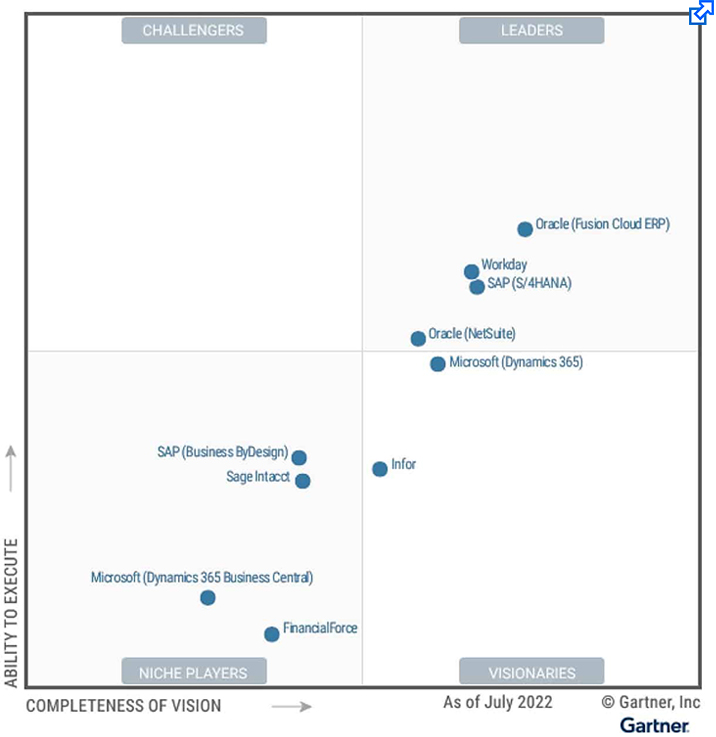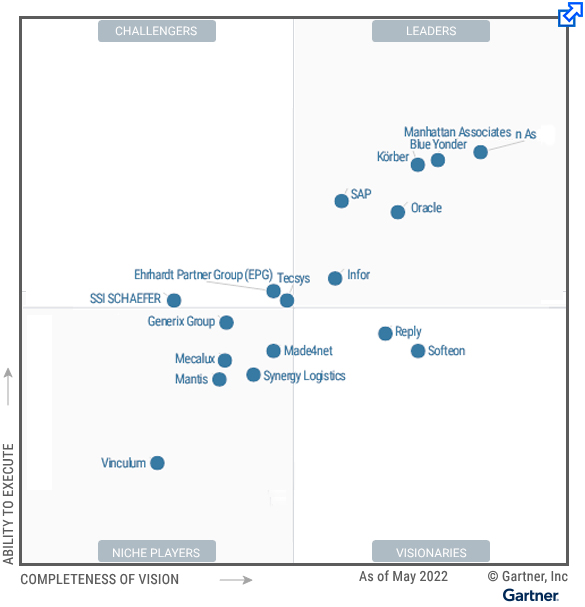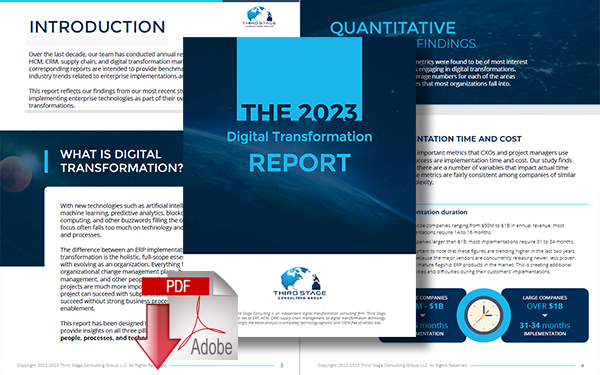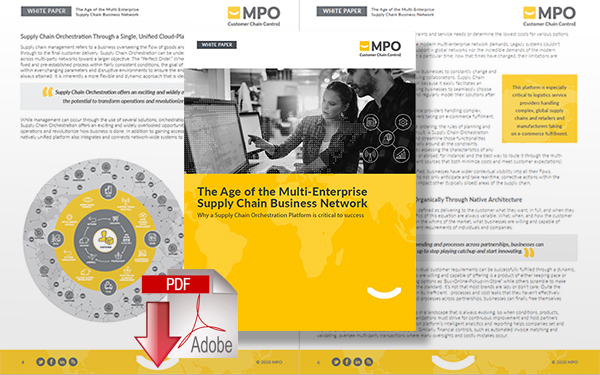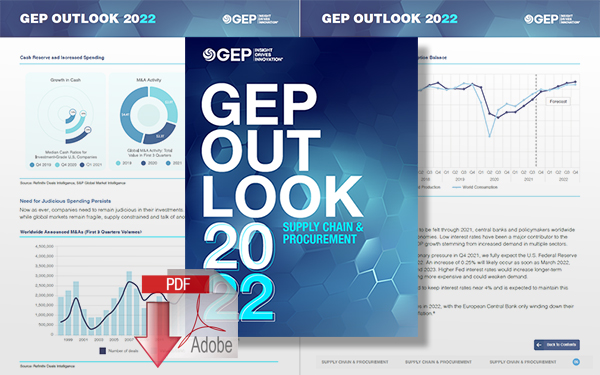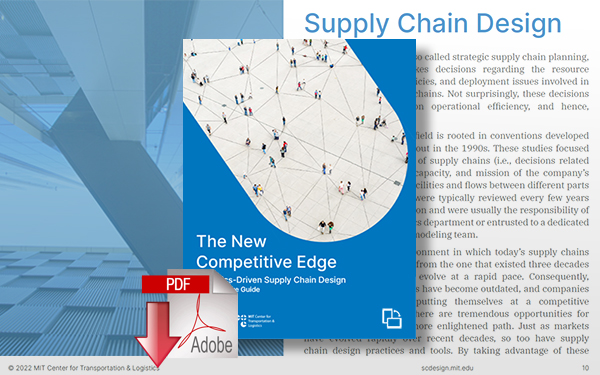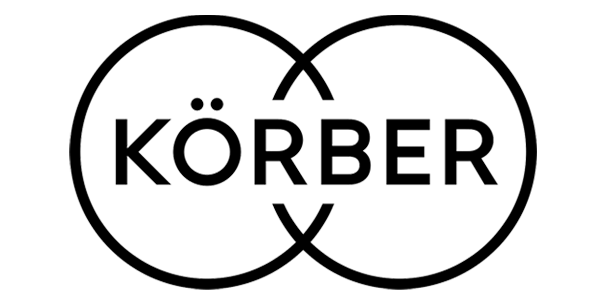Enterprise Resource Planning Gains Ground Into the Supply Chain Management Sector

On track to hit $78.4 billion in revenues by 2026, the global enterprise resource planning market is increasingly making its way into the supply chain management sector, where companies are leveraging their ERPs to both manage the current uncertainty and plan for the future.
Enterprise Resource Planning Platforms
All-encompassing systems that manage inventory, procurement, manufacturing, orders, projects, human resources, and other core capabilities for companies, enterprise resource planning (ERP) platforms continue to expand right along with their customers’ needs.
They’ve come a long way since manufacturers started using them to manage inventory in the 1960s, and were officially named “ERPs” by Gartner in the 1990s.
Fast-forward to 2022 and ERP software capabilities include all of the above plus supply chain, logistics, product lifecycle, risk, and maintenance management (to name a few).
And if a certain capability doesn’t come “built into” the ERP, there are always application programming interfaces (APIs) available to connect the two and create a unified platform that shares the same data, insights, and capabilities.
Magic Quadrant for Cloud ERP for Service-Centric Enterprises
Source: Gartner, July 2022*
With the recent spate of supply chain disruptions, transportation snarls, and labor shortages creating a bigger need for supply chain management (SCM) functionalities, ERP vendors have responded by bolstering their offerings in this realm.
Concurrently, the best-of-breed SCM vendors have stepped up to the plate and refined their offerings, added new functionalities, and even made them easier to connect to outside applications.
On track to hit $78.4 billion in revenues by 2026 - up from $38.8 billion in 2018 - the global ERP market is being driven by a greater need for operational efficiency and transparency in business processes, increased use of Cloud and mobile applications, and high demand for data-driven decision-making.
Increased demand from small- to mid-sized businesses plus the ongoing technological advancements on the part of vendors are also accelerating the adoption rates of these multi-faceted software platforms.
Staying At The Forefront
Now squarely in their third year of a global pandemic, shippers of all sizes and across all industry sectors are investing in technology to help them address current challenges and begin to plan for the future.
Those with ERPs in place are enabling more functionalities - many of them related to SCM - while others are implementing platforms that help them work smarter, better, and faster in an uncertain business environment.
“In general, there’s definitely more of a focus on supply chain than there has been in the past. It’s at the forefront of everybody’s mind right now and will likely stay there for at least the next few years,” says Bill Brooks, VP, NA transportation portfolio at Capgemini.
In response to these needs, he says both the ERPs and the best-of-breed SCM vendors are investing in more digitalization, Cloud computing, Artificial Intelligence (AI), digital twins, analytics, and other advanced technologies that converge to help shippers develop smooth-running, end-to-end supply chains.
For now, at least, Brooks sees plenty of room in the marketplace both for broader-reaching ERP vendors and more specialized best-of-breed software developers. They both continue to invest in their platforms and serve their respective markets, he adds.
“Everyone has their preferences as to what type of software they want,” says Brooks, “and those preferences probably aren’t changing in the short-term.”
Enterprise Resource Planning Dives Deeper Into Warehouse Management Systems
As companies continue to work out their current inventory, labor, and transportation issues, more attention is being paid to the warehouses and distribution centers (DCs) that receive and stock goods and then ship orders. With more customers demanding ultra-fast shipping and eMarketer expecting another 14.8% increase in U.S. retail e-commerce sales this year, warehouse management systems (WMS) have been getting more attention and investment, both on the part of shippers and ERP vendors.
“The ERPs are starting to see WMS as an application area that’s worth pushing further,” says Clint Reiser, director of supply chain research at ARC Advisory Group. In some cases, ERP vendors are developing and then offering WMS to their current customers or “install” bases. In other examples, they’re selling the SCM application to customers that are outside of their install bases.
“This holds true with Oracle and possibly SAP as well,” says Reiser, who adds that Oracle has recently signed on customers for its Cloud-based WMS and then had those users also adopt its Cloud transportation management (TMS) platform. “In the past, it’s almost exclusively been TMS first and then WMS as an add-on,” he points out.
Overall, Reiser says WMS is becoming a “higher priority” for ERP vendors like Infor, Oracle, and SAP. He points to the pandemic-related challenges plus the rise in e-commerce driving at least some of this interest. “The WMS application area may be getting more emphasis from the vendors because of its greater interest out in the market,” he explains, “due to e-commerce, the COVID-related disruptions and shortages, and the broader supply chain crises.”
Protecting Their Turfs
Roll the clock back about 10 years and Reiser remembers that many of the best-of-breed SCM vendors were in the early stages of building out their platforms, with JDA working on its “Supply Chain Process Platform” and Manhattan Associates introducing its SCALE offering. Other vendors followed suit.
As technology advanced, the introduction of microservices - software made up of small, independent services that use APIs to communicate with one another - further enabled integration capabilities in the Cloud. This evolution facilitated the exchange of information between adjacent applications like TMS, WMS, distributed order management (DOM), and others.
Ultimately, these advancements gave best-of-breed SCM vendors the power they needed to be able to create more integrated, end-to-end processes. No longer just “standalone” applications, these SCM solutions could now work in tandem with other best-of-breed applications and/or with larger enterprise solutions. Borrowing a term from the business strategy sector, Reiser says this helped best-of-breed vendors construct “moats” around their applications.
“[Microservices] help specialty software vendors keep others off of their turf and solidify their place in the [market],” says Reiser, who sees the use of microservices in SCM continuing. “Now, some of them are using microservices to build up their solutions with a common database that allows them to compete on the basis of end-to-end supply chain unification.”
There’s Room For Both
Looking around at the ERP space, Dwight Klappich says vendors operating in it have matured their supply chain capabilities, warehousing, transportation, and other components in order to address the basic needs of a high percentage of their customers.
“For companies that don’t have the most complex or sophisticated needs, ERP supply chain solutions are well worth consideration,” says Dwight Klappich, senior director, supply chain research at Gartner, Inc. “In most cases, if you’re committed to an ERP platform like Oracle, SAP, or Microsoft, you probably should shortlist your ERP vendor.
Shippers that need more robust software capabilities would be wise to broaden that scope and add best-of-breed solutions to those shortlists. “There’s a market out there for best-of-breed solutions,” says Klappich, “and room for both the ERPs and the specialty SCM vendors.” For example, he says Gartner’s 2022 Magic Quadrant for WMS is dominated by six vendors, three of which are ERPs (SAP, Oracle, and Infor), and the other three are supply chain suites (Blue Yonder, Manhattan, and Korber) - See chart below*
Read: Körber is a Leader in the 2022 Gartner® Magic Quadrant™ for WMS
In some cases, Klappich says the ERPs have an advantage because they can invest in new functionalities that can be effectively leveraged across the entire software suite. This creates economies of scale on the research and development (R&D) front, where ERPs that invest in SCM can then leverage those advancements across their entire platforms.
Take analytics, for example. According to Klappich, Oracle, SAP, and Infor have all invested in robust analytics platforms that can be used across all of their applications. Specialty vendors, on the other hand, either have to try to replicate that investment or partner/integrate with a third-party application provider that does offer those capabilities.
Right now, Klappich says the ERP and best-of-breed vendors share an important goal of improving the user experience. He points to Oracle’s introduction of the Redwood Design System in 2020 as one example of this. Redwood is the new Oracle standard for application look and feel and was implemented company-wide to help unify the user interface of all of the company’s product offerings.
“Some of it is aesthetics, but as a whole Redwood takes into account how to improve productivity by streamlining the user experience,” says Klappich, “and by factoring in things like conversational voice capabilities and embedded search.” He adds that best-of-breed SCM vendors are taking a similar approach with the goal of improving the user experience, staying out in front of the ERPs, and further protecting their turf.
More Seamless Flow
Looking ahead, Brooks sees the ERPs continuing to build out their SCM offerings in an attempt to “jump over” the best-of-breed vendors. He also sees the best-of-breeds solidifying their positions in the market by staying nimble and innovative.
“At this point, I don’t see either one of those getting a leg up on the other,” says Brooks, “but I do expect more integrations across different software platforms/vendors plus the continued use of microservices and digitalization to create even more seamless flow that we’ve seen in the past.”
Report: 2022 Gartner® Magic Quadrant™ for Cloud ERP for Service-Centric Enterprises
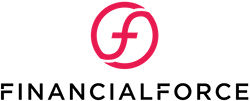
FinancialForce | FinancialForce is a Niche Player in this Magic Quadrant. The product originated in 2009, providing a lower midmarket global solution. The majority of its clients are in the Americas, followed by EMEA and a much lower percentage in Asia/Pacific (APAC). FinancialForce offers a la carte pricing, as well as bundled pricing models, with the majority of its customers using named-user-based pricing. It is a 100% managed cloud SaaS solution but also includes on-premises configurations in its SaaS licensing, provided by Salesforce data centers. FinancialForce relies heavily on partner solutions for its HR and operational capabilities; however, financial modules are mainly internally developed solutions. FinancialForce typically delivers more than three upgrades per year.
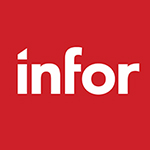
Infor | Infor is a Visionary in this Magic Quadrant. Its approach to service-centric ERP is through three main offerings - Infor CloudSuite Corporate, InforCloudSuite Healthcare, and Infor CloudSuite Public Sector. These products originated in 2014, providing midmarket to upper-midmarket global solutions, with the majority of its customers with annual revenue of more than $150 million and less than $1 billion. The majority of its clients are almost equally placed in the Americas and EMEA, and a lower percentage are in APAC. It offers only user-based pricing. Infor CloudSuite, which forms the foundation for these products, is a 100% managed cloud SaaS solution on Amazon Web Services (AWS). Core ERP components are delivered as part of Infor CloudSuites. Users may add third-party tools via the OS platform and Marketplace.

Microsoft (Dynamics 365) | Microsoft Dynamics 365 is a Visionary in this Magic Quadrant. The product originated in 2016, providing mid-to-upper midmarket to Tier 1 global solutions, with the majority of its customers in the midmarket and the rest in larger enterprises. The majority of its clients are almost equally placed in EMEA, with the Americas a close second, and a lower percentage are in APAC. It offers only user-based pricing, with different levels for user types (named user and shared device). It is mainly a managed cloud SaaS solution hosted as a managed service by Microsoft and partners, but also offers, to a lesser extent, on-premises configurations. The majority of its service-centric customers are in verticals called out in this analysis. Dynamics 365 integrates with partner solutions for operational capabilities; however, many of its ERP components are sourced in-house. Typically, eight upgrades are delivered per year, with users needing to be within two service packs from the latest release.

Microsoft (Dynamics 365 Business Central) | Microsoft Dynamics 365 Business Central is a Niche Player in the Magic Quadrant. Microsoft Dynamics 365 Business Central originated in 2018, providing a lower-midmarket & global solution, with clients in the Americas, EMEA, and APAC with annual revenue of typically less than $150 million. It uses a subscription-based named-user pricing approach. Dynamics 365 Business Central relies solely on partner implementations. It is a 100% managed cloud solution but also includes on-premises configurations in its SaaS licensing, delivered from Microsoft 365 data centers. Dynamics 365 Business Central relies heavily on partner solutions available on Microsoft AppSource for its HR and operational capabilities; however, financial capabilities are native to the product. There are two major and 10 minor upgrades per year; customers can choose the upgrade date within a grace period. Most upgrades are done within one month of rollout and take less than 30 minutes to complete.

Oracle (Fusion Cloud ERP) | Oracle Fusion Cloud ERP is a Leader in this market. Oracle Fusion Cloud ERP originated in 2013, providing a highly configurable global solution for upper-midmarket and Tier 1 organizations, with global clients across the Americas, EMEA, and APAC. Oracle’s Cloud partner program has a robust partner network for implementations, and Oracle also has an in-house implementation team. Oracle Fusion Cloud ERP is a 100% managed cloud solution running in Oracle data centers. The product is an extensive solution covering the ERP capabilities outlined in the Market Definition/Description section of this document, while still being open to third-party solutions for those pursuing a more composable architecture. Four upgrades are delivered per year.

Oracle (NetSuite) | Oracle NetSuite is a Leader in this market. Oracle NetSuite originated in 1998, providing a midmarket global solution, and the majority of its customers are lower-midmarket, consistent with Oracle’s positioning of the product within its portfolio. The majority of its clients are in the Americas, followed by EMEA and APAC. It offers a monthly subscription with a base platform price, module pricing, and named-user-based pricing. It is a 100% managed cloud SaaS solution running on Oracle data centers. Its clients are well-distributed over the verticals studied in this research. Oracle NetSuite has robust functionality for service-centric ERP that uses internally developed components; however, it does have partnerships for augmented functionality in O2C, HR, and procurement. Two upgrades are automatically delivered to users per year.
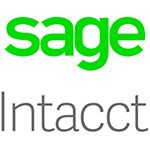
Sage Intacct | Sage Intacct is a Niche Player in this Magic Quadrant. The product originated in 2000, providing a targeted solution for lower-midmarket organizations, with clients mainly in North America, and it has an emerging global presence in select countries. It uses a concurrent user approach for pricing. Resellers and implementation partners are key to Sage Intacct’s strategy, leveraging value-added resells for implementation work not in focus for its own professional services team. Resellers and implementation partners are key to Sage Intacct’s strategy, leveraging value-added resells for implementation work not in focus for its own professional services team. It is a 100% managed cloud solution. It mainly focuses on financial management applications, including a planning solution, using in-house developed solutions. Other capabilities are present; however, they rely on partner solutions in many areas. Four upgrades are delivered per year, and all customer organizations are upgraded at the same time.

SAP (Business ByDesign) | SAP Business ByDesign is a Niche Player in this Magic Quadrant. The product originated in 2007, providing a targeted solution for midmarket organizations and some penetration in Tier 1 organizations, with clients in the Americas, EMEA (largest market), and APAC. It uses a named-user approach for pricing. Resellers primarily sell SAP Business ByDesign strategy through the SAP PartnerEdge-Sell partner program& on partner contracts. It is a 100% managed cloud solution with no on-premises capability. It has good in-house capabilities for financial management and procurement applications. Other capabilities are present; however, they rely on partner solutions in many areas. Four upgrades are delivered per year, and all customer organizations are upgraded within the same day.
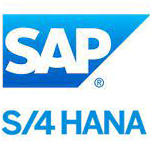
SAP (S/4HANA) | SAP S/4HANA Cloud is a Leader in this Magic Quadrant. While there are several deployment models for SAP S/4HANA, we only evaluated SAP S/4HANA Cloud, which is SAP’s public cloud offering, in this Magic Quadrant. The product originated in 2015, providing a targeted solution for midmarket organizations and Tier 1 organizations, with clients in the Americas, EMEA (largest market), and APAC. SAP S/4HANA Cloud is both sold directly to customers and sold through implementation partners. SAP S/4HANA Cloud is a 100% managed SaaS cloud solution. It has extensive in-house capabilities for financial management, O2C, HR, and procurement applications. SAP S/4HANA Cloud, SAP’s public cloud offering, has a reduced feature set compared to SAP S/4HANA Cloud, the private edition.

Workday | Workday Enterprise Management Cloud is a Leader in this market. The product originated in 2008, providing a targeted solution for upper-midmarket and Tier 1 organizations, with clients in the Americas, EMEA, and APAC, although Workday has a good percentage of customers with annual revenue of less than $150 million. It uses an enterprise approach toward pricing, which is based on the value the solution provides. Workday is primarily sold directly to customers, completely bypassing value-added resellers. It is a 100% native cloud solution with no on-premises capability. It has good in-house capabilities for financial management, planning and analytics, O2C, HR, and procurement applications. Two upgrades are delivered per year, and all customer organizations receive the update at the same time.
Gartner Peer Insights | Service-Centric Cloud ERP Solutions Reviews and Ratings
*These graphics and certain text pieces were published by Gartner, Inc. as part of a larger research document and should be evaluated in the context of the entire document. Gartner does not endorse any vendor, product, or service depicted in its research publications, and does not advise technology users to select only those vendors with the highest ratings or other designation. Gartner research publications consist of the opinions of Gartner’s research organization and should not be construed as statements of fact. Gartner disclaims all warranties, expressed or implied, with respect to this research, including any warranties of merchantability or fitness for a particular purpose.
Related Resources
2023 Digital Transformation Report
In this 2023 Digital Transformation Report, we share insights gained from our annual research on technology trends and digital transformation and explore the top 2023 enterprise resource planning systems and industry development. Download Now!
The Age of the Multi-Enterprise Supply Chain Business Network
This white paper offers insight into leveraging your network to derive the greatest possible value under any circumstance, such as through a Supply Chain Orchestration platform that can automate and streamline a wide range of your business needs. Download Now!
GEP Outlook 2022 - Supply Chain & Procurement: Key Trends, Challenges, and Opportunities
Get actionable insights to effectively deal with disruption and uncertainty and learn supply chain and procurement strategies that can help your business thrive in the new normal. Download Now!
The New Competitive Edge - Analytics-Driven Supply Chain Design
This executive guide, developed in collaboration between the Massachusetts Institute of Technology’s Center for Transportation & Logistics (MIT CTL) and Coupa, presents a vision for future-proof, analytics-driven supply chain design. Download Now!
Completing your RPA Investment with AI-based Capabilities
In this white paper are five examples from day-to-day order-to-cash and procure-to-pay processing adventures that showcase how artificial intelligence/AI is the ideal complement to RPA. Download Now!
More Resources: Enterprise Resource Planning
Related Article: 4 Strategic Reasons to Choose a Unified Source-to-Pay Platform Over Enterprise Resource Planning
Article Topics
Korber Supply Chain News & Resources
Unified Control System - Intelligent Warehouse Orchestration The Future of Order Fulfillment NECS and Körber to Establish Largest Automated Freezer Warehouse in Vietnam Fit & Fast: Titan Brands’ Adoption of Tech Accelerates Supply Chain Efficiency An Inside Look at Dropshipping Looking ahead – The future of Supply Chains Supply Chain Imperatives 2024 and Beyond More Korber Supply ChainLatest in Supply Chain
FedEx Announces Plans to Shut Down Four Facilities SAP Unveils New AI-Driven Supply Chain Innovations How Much Extra Will Consumers Pay for Sustainable Packaging? U.S. Manufacturing is Growing but Employment Not Keeping Pace The Two Most Important Factors in Last-Mile Delivery Most Companies Unprepared For Supply Chain Emergency Microsoft Unveils New AI Innovations For Warehouses More Supply ChainAbout the Author


